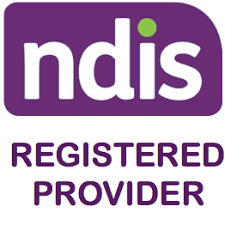Apps
Defining hyperactivity
Hyperactivity involves the child engaging in excessive motor activity.
Unsure if it's hyperactivity or ADHD? Read our blog: Which is it: Hyperactivity or ADHD?
Hyperactivity as a part of normal development
It is normal for children to be active and some children are more active than others. As children mature, they develop a range of skills and abilities supported by adult guidance which help them develop how to better control their body.
When hyperactivity becomes of concern
Whilst most children over time learn how to calm their body when instructed to, or are required to stop so that they can engage in an activity, children with hyperactivity struggle.
For example, during a floor time activity a child will roll around on the carpet, or roam around the room aimlessly touching everything in sight. They may make sudden noises when everyone is expected to quietly listen to the book being read; or grab toys from the toy basket in a haphazard manner without playing with any of them properly; or climb on furniture. Whereas, during lunch time, an adolescent who is sitting with peers will fidget with something (e.g. cutlery, condiment shakers) or squirm and reposition constantly in their seat and experience excessive mind-wandering which affects their ability to partake in the conversations as they often interrupt others and take over the conversation.
Hyperactivity may present on its own or co-occur with conditions such as Attention Deficit Hyperactivity Disorder, Sensory Processing Disorder, Hyperthyroidism, Anxiety Disorder and Fragile-X disorder.
Impact of hyperactivity
Having to constantly guide a child’s hyperactivity is stressful and wearing. Continually having to say ‘Could you please stop tapping?’, ‘What are you throwing? Should you be touching that?’, ‘For the fifth time could you please stop talking’ or ‘How many times do I need to tell you to stop running?’ tests everyone’s patience. It often results in people feeling frustrated, annoyed and stressed as the child does not appear to listen. The climate of the context (e.g. childcare, preschool, kindergarten, school, disability support and youth service) can change dramatically. A considerable amount of time and energy can be spent on the child showing the hyperactive behaviour, which can have a deleterious effect on the quality of the educational experience for all children. Research consistently shows that managing behaviour is linked to staff experiencing high levels of stress, burnout, and job dissatisfaction.
Hence, hyperactive behaviour affects everyone involved and the child who is hyperactive requires necessary help to learn positive ways of behaving and managing their emotions.
Positive support resources for hyperactivity

Positive Behaviour Support (PBS) focuses on evidence-based strategies and person-centred supports that address the needs of the individual and the underlying causes of behaviours of concern, to enhance the quality of life for both the individual and those that support them.
PBS recognises that there is no single cause for behaviour . It is a complex that is a product of the interaction between multiple factors contributing to its development and persistence.
It is like the tip of the iceberg so it is essential to look beneath the surface to work out the why before we can address the problem. Behaviour Help resources are at hand.
Get Started with Behaviour Help App
Assess-manage-prevent behaviours of concern efficiently and effectively with the Behaviour Help App.
Download this free PDF guide
The forms contained in this pdf booklet are from the H for Hyperactivity: Positive Behaviour Support guide that can be used as part of the process of developing a PBS plan.
Get Started with Behaviour Help App
Assess-manage-prevent behaviours of concern efficiently and effectively with the Behaviour Help App.

